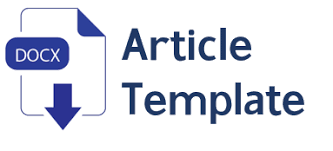Blended Learning in English Academic Reading to Respond Revolution 4.0
DOI:
https://doi.org/10.29408/veles.v3i2.1559Keywords:
Blended Learning, English Academic ReadingAbstract
The 4th industrial revolution effects many areas in today’s global era, including higher institution. Internet is the main instrument in this revloution. The limitation of time room availibility of the students will accor if the schools appliy face to face only in leaarning process. Blended learning is the alternative solution to overcome the case of inavility time and palce to learn. In addition to developing distance universities should also equip students with English reading skill. This study is aimed at describing the effect of blended learning on English academic reading by using experimental method with pretest-posttest control design. The sample of this research is 32 students of AMIK Bina Sriwijaya. The data were collected through English reading comprehension test in the form of multiple choice and were analyzed by using Independent Sample T test. Based on the Independent Sample T test output table in the Equal variances assumed section, it is found that Sig values. (2 tailed) of 0.001<0.05.It can be concluded that there is a significant difference between the average learning outcomes of respondents in the experimental group and respondents in the control group. In other word, there is significant effect of blended learning on students reading skill achievement.
References
Abisamra, N. S. (2009). Teaching language Reading: from an interactive perspective Retrieved from website: www. Nadaislad.com/reading
Al-Jarf, R. (2007). Impact of blended learning on EFL college readers. In IADIS International Conference e-Learning, Lisbon
Banados, E (2006) A blended-learning pedagogical model for teaching and learning EFL successfully through an online interactive multimedia environment CALICO Journal 23/3: 533–550. Belajar dan pembelajaran. Bandung: Alfabeta.
Behjat, F. & M. Yamini and M. S. Bagheri. (2011). Blended Learning: A Ubiquitous Learning Environment for Reading Comprehension, International Journal of English Linguistics, 2.1, 97-106.
Creswell, John W. 2012. Research Design Pendekatan Kualitatif, Kuantitatif, dan Mixed. Yogyakarta: Pustaka Pelajar.
Goodman, K. (1988). The Reading Process. In P. L. Carrell, J. Devine & D. E. Eskey (eds.) Interactive Approaches to Second Language Reading. Cambridge: CUP, 11-21.
Lalima, Lata K. & Dangwal2 (2017) Blended Learning: An Innovative Approach. Universal Journal of Educational Research 5(1): 129-136, 2017 http://www.hrpub.org DOI: 10.13189/ujer.2017.050116
McGee P. & A. Reis. (2012). Blended Course Design: A Synthesis of Best Practices, Journal of Asynchronous Learning Networks 16.4, 7-22.
Any Noor., (2013), Management Event. Bandung : Alfabeta
Rumelhart, D. E. (1977). Toward an interactive model of reading. In S. Dornic (ed.), Attention and Performance (vol. New Jersey: Lawrence Erlbaum Associates, 573-603.
Sharma, P., & Barrett, B. (2007). Blended learning: Using technology in and beyond The language classroom. Great Britain: Macmillan
Sudjana, N. dan Ibrahim. (2004). Penelitian dan Penilaian Pendidikan . Cetakan Ketiga. Bandung : Sinar Baru Algesindo
Sugiyono. 2007 Metode Penelitian Kuantitatif Kualitatif dan R&D . Bandung Alfabeta
Tesser, C.C. (2005) The Role of Building Reading Comprehension. Retrieved on Nov 3,2012 from. http://apcentral.collegeboard.com /apc/public/repository/Spanish_Lang_SF_Build_Read_Comp07.pdf
Thorne, K. (2003) Blended learning: How to integrate online and traditional learning, London, kogan page limited
Downloads
Published
How to Cite
Issue
Section
License
Authors who publish with VELES agree to the following terms:
- Authors retain copyright and grant the journal the right of first publication with the work simultaneously licensed under Creative Commons Attribution-ShareAlike 4.0 International License (CC BY-SA 4.0).
- Authors can enter into separate, additional contractual arrangements for the distribution of the journal's published version of the work (e.g., posting it to an institutional repository or publishing it in a book), with an acknowledgment of its initial publication in this journal.
- Authors are permitted and encouraged to post their work online (e.g., in institutional repositories or on their website) before and during the submission process, as this can lead to productive exchanges and earlier and greater citations of published work.
VELES is licensed under a Creative Commons Attribution-ShareAlike 4.0 International License.





